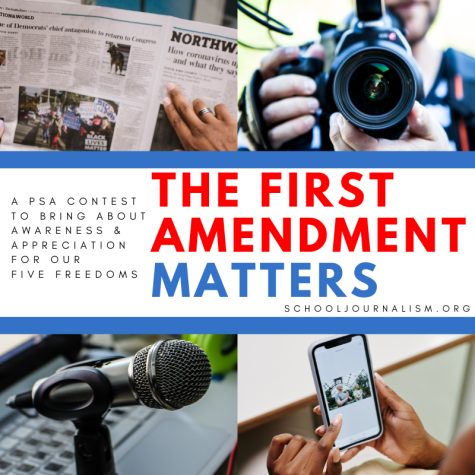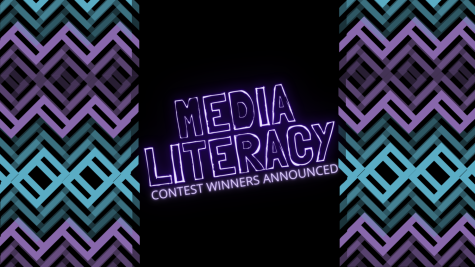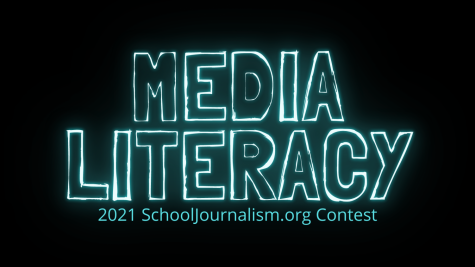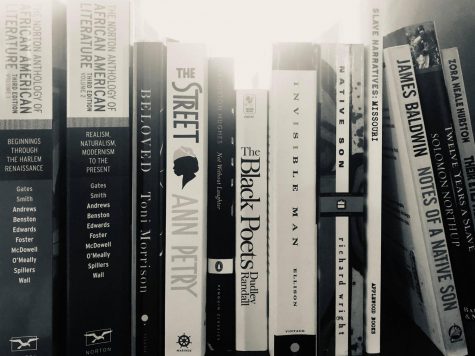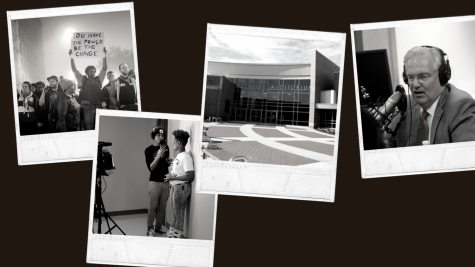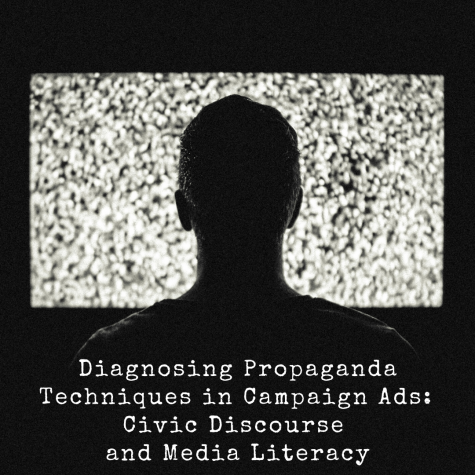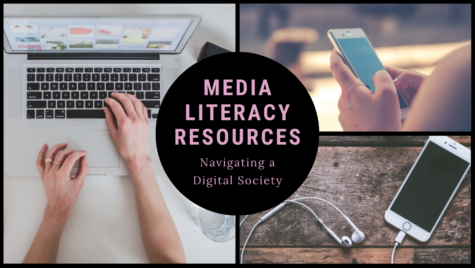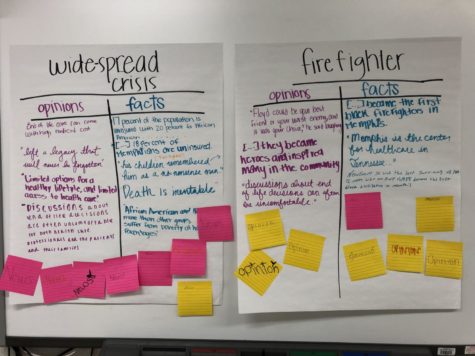News literacy lessons available for science teachers
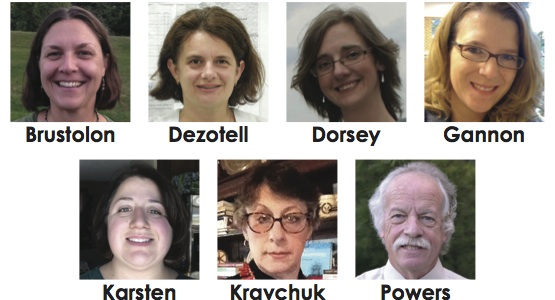
The American Society of News Editors and the Journalism Education Association in partnership with the Donald W. Reynolds Journalism Institute offer free news literacy lessons for English/language arts, science, math and social studies teachers to use in secondary-school classrooms. The lessons are available at WhyNewsMatters.org, SchoolJournalism.org and jea.org. Funding for the project was provided by the Robert R. McCormick Foundation.
The News Literacy Corner will highlight each of these subject areas. This week, science is covered.
The science lessons were developed by seven educators to help middle school and high school teachers incorporate news literacy within the science classroom. These lessons are aligned with the Common Core State Standards, and a Creative Commons BY-NC-SA 4.0 License allows teachers to adapt the lessons for educational purposes.
“The lessons provide a readily accessible guide for teachers to use directly or adapt and modify to use in their classroom instruction,” said Frances Hess, Ed.D., an award-winning science educator and National Board Certified Teacher. Hess worked with ASNE in support of the project and served as the District IV director of the National Science Teachers Association during that time. “The lessons also serve as models to help teachers develop their own lesson that integrate news literacy principles. Through the implementation of the lessons, students acquire sound tools helping them distinguish fact from opinion and determine meaningful, trusted and credible news sources with the ultimate goal of developing them into empowered, knowledgeable citizens.”
There are eight lessons, and each focuses on a different aspect of news literacy. They are also divided into different grade levels. Materials for each lesson are provided.
Click here to download the lessons.
To learn more about teaching news literacy and receive information about available resources, join the News and Information Professional Learning Community.
The science educators who developed the lesson plans gave their thoughts on the importance of teaching news literacy in the science classroom and the lessons they created.
Seventh- and eighth-grade lessons
“Really?! I’m eating WHAT?!”
Developed by Danielle Dorsey
Why do you think teachers should use this lesson in their science classroom?
“Part of learning science is evaluating sources for reliability. Students want the truth! Teachers should consider this lesson in their curriculum so students can learn the different types of news media and be better able to analyze and investigate claims in order to find that truth and accurately communicate good information, not opinions.”
Why do you think it’s important for students to use critical thinking and information in the news to become more science literate?
“Students in the classroom are not just learning the facts of science. They are learning about the process. Information changes in an instant in science. Books they read today can be out of date, and we look to the news and journals for the most up-to-date information. The process involves critical thinking skills that can be used in every career, every class and every decision students make in their lives. New information comes so fast, it is hard to decipher which is critical and which is false. Information has always been powerful, and students need to learn that understanding the information they are presented with is powerful in the decisions and choices they make and how it affects our world.”
“Exploring Silica-sand Mining”
Developed by Anna Karsten
Why do you think teachers should use this lesson in their science classroom?
“It is important for students to learn how to form their own opinions based on facts, which is the point of my lesson on silica-sand mining. The intent of my lesson is to cover a local controversial topic, so I hope teachers will modify the topics to work in their own community to increase student interest.”
Why is it so important for students as young as seventh and eighth grade to learn how to form informed opinions on controversial issues in science?
“Students have opinions on just about everything, so I want them to understand the science behind the issues. The students hear lots of opinions and thoughts. They need to learn how to search out the facts so they can be informed citizens. This will be an invaluable skill to have as they continue their education. It is also a sneaky way to get them even more invested in science.”
“Evolution WebQuest”
Developed by Deborah Kravchuk
Why do you think teachers should use this lesson in their science classroom?
“Experienced practicing teachers have created and reviewed the lessons in the news literacy curriculum for science. They have planned the lessons using the CCLS, NGSS and news literacy standards; researched the content; determined the validity of the information presented; and provided teacher guides and student materials that are easily understood and can be adapted for all levels of student understanding.”
What are the benefits of students understanding the value of public databases as it relates to news literacy?
“While many consider today’s students to be digital natives, they may not necessarily be digitally literate. With unlimited global access available to students, it is incumbent upon us as educators to help our students determine the validity of the information source they are looking at and assess whether that information is authentic and free of bias. This makes news literacy more than just mining the web for information. It requires our students to evaluate the content they are reading and effectively communicate their understanding to a broad range of readers or listeners.”
Eighth-, ninth- and 10th-grade lessons
“Static Electricity and Cell Phones Myth”
Developed by Michele Brustolon
Why do you think teachers should use this lesson in their science classroom?
“The lesson has many components, such as reading and notetaking, researching and analyzing, along with experimenting. It focuses on one topic with the ability to delve into deeper skills. The students have to question what they are reading and determine the reliability of what they have researched. This is a great lesson to teach students what the news literacy principles are and actually use them. There is no greater experience than working through the topic in real life.”
How can an understanding of science add to a student’s news literacy skills?
“STEM programs continue to grow, and every day we read about new ideas in the news that are science- and technology-related. It is our job to teach these news literacy skills in science class so our students can make informed choices. So much of our lives are connected to science that we need to know which resources are reliable. Science is a foundation that allows us to determine what resources are credible.”
“Fact or Hype: Ebola in the News”
Developed by Dorsey
Why do you think teachers should use this lesson in their science classroom?
“Most students will be looking to the Internet as their first source of information. Using this lesson in any science class will help students to become critical readers of information and analysts, as well as scientists, in grappling with information that may be false.”
How can students use news literacy skills to evaluate the credibility of online resources?
“Students will be bombarded with the information they read on different websites, especially social media. Utilizing these literacy skills make students better stewards in confronting and reporting information in the information age with maturity and good citizenship.”
“Water in the United States”
Developed by Erin Gannon
Why do you think teachers should use this lesson in their science classroom?
“I use current events every week in my classroom, but I felt that students were not getting as much from the activities as they could. I also noticed that the articles that my students were submitting for current events were from questionable Internet sources or weren’t articles at all. It appeared that they needed to learn about how to find good news sources for current events. Many of them still believe that everything that they read on the Internet is true, and I hoped that by using a relevant current event lesson and assignment that I would enable them to be better students and in turn better citizens. I feel that I am not alone and that other teachers are hoping to have the same effect on their students and will use this lesson to both discuss the current drought situation in the western United States while improving their news savviness.”
How does the seven-factor method make students more prepared to evaluate the quality of news sourcing?
“I like the seven-factor method because it reminds me of the scientific method that we use in early science classes. It provides a framework for students to follow, and although the process will be the same, each student may have a different end result depending upon the articles that they examine and their own take on the issue. Order of operations, such as the seven-factor method, are an essential skill when students get out into the real world, so the more times that they can practice such skills the better.”
“Weekly Earth Science Reading”
Developed by Mark Powers
Why do you think teachers should use this lesson in their science classroom?
“The lesson I developed for science news literacy is useful in a variety of ways for both teachers and students. The lesson is intended to expand the science experience beyond what is specifically planned by the classroom teacher. Teachers are often given curricular parameters based upon a variety of standards and other school-specific parameters about what is covered in each course of study. Students may feel that some personal topics of interest are not being presented, which can create a sense of detachment from their learning. This lesson provides for a content enrichment opportunity and a way for students to critically evaluate what they read in the news.”
Why is it important for students to develop a habit of reading the news?
“This lesson teaches students to understand the importance of accessing news reporting while asking them to be careful consumers of the same. Students practice the habit of reading the news on a weekly basis, synthesizing what they have read and evaluating the veracity of the source. This practice becomes a useful skill that students can employ beyond the area of science news reporting and beyond their high school experience.”
11th- and 12th-grade lessons
“Decommissioning Nuclear Power Plants”
Developed by Dana Dezotell
Why do you think teachers should use this lesson in their science classroom?
“This lesson offers an extended understanding of isotopes using a real life situation. I observed that my students were more involved in this topic by using this scenario than they were when I didn’t use the Chernobyl video as the starting point. When students study a real disaster, see videos from the scenes and read reports about the consequences after a nuclear accident, they reflect more deeply and put more time in finding a solution to decommission a nuclear plant.”
How can news literacy skills help students to evaluate news media bias?
“One of the roles of the New Generation Science Standards is to increase the problem-solving strategies and allow students to explore science behind the textbooks. My students became literate in illustrating a case that shocked the world in 1986, especially under the Soviet umbrella, trying to cover up the situation and kept the incident secret for three days. Finding the best ways to decommission another nuclear plant in the state where they live allowed my students to analyze different reports from biased and unbiased sources. Selecting the best resources and applying the knowledge from several other nuclear plants that were decommissioned worldwide allowed my students to draw sustainable plans.”



